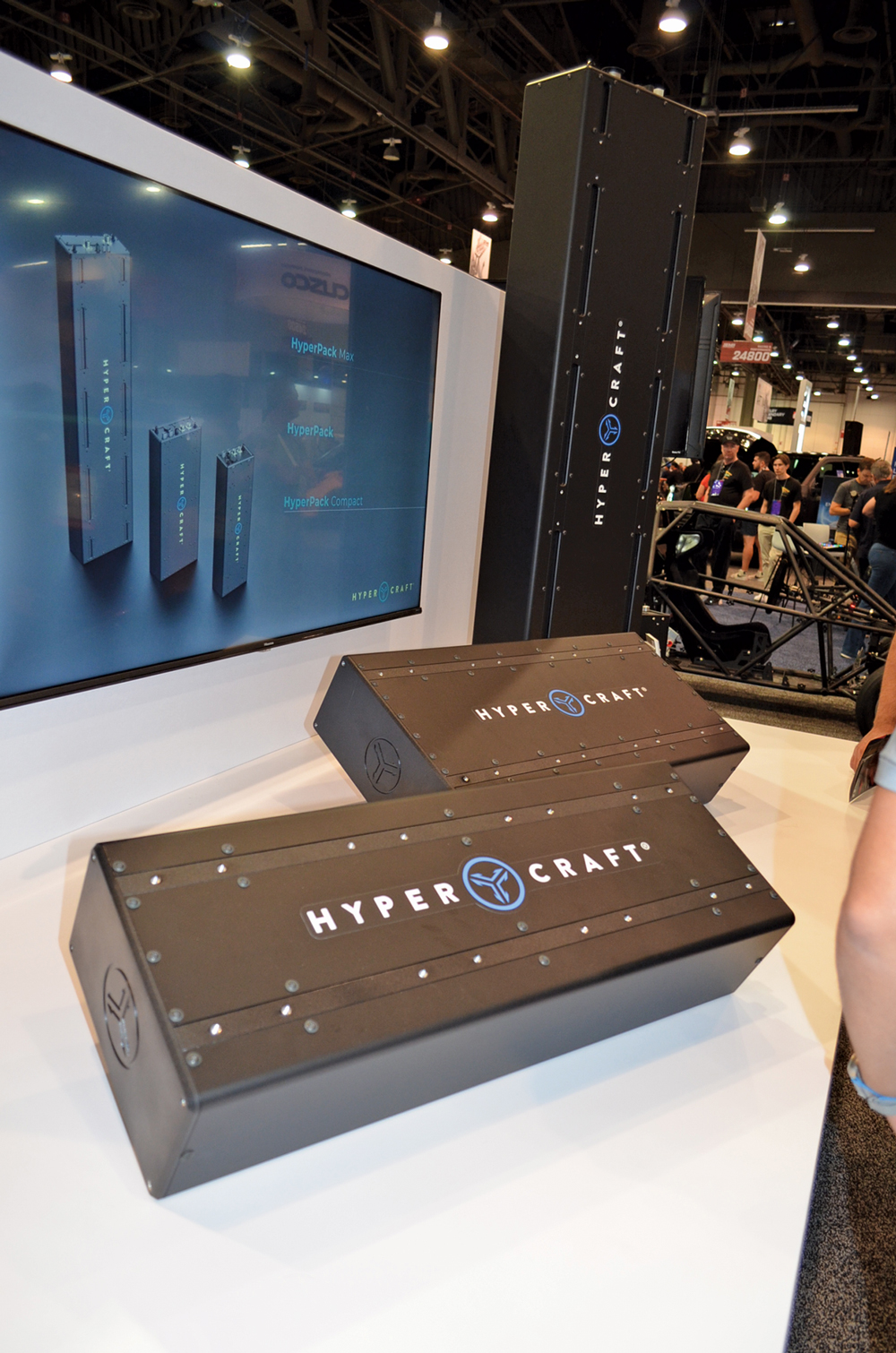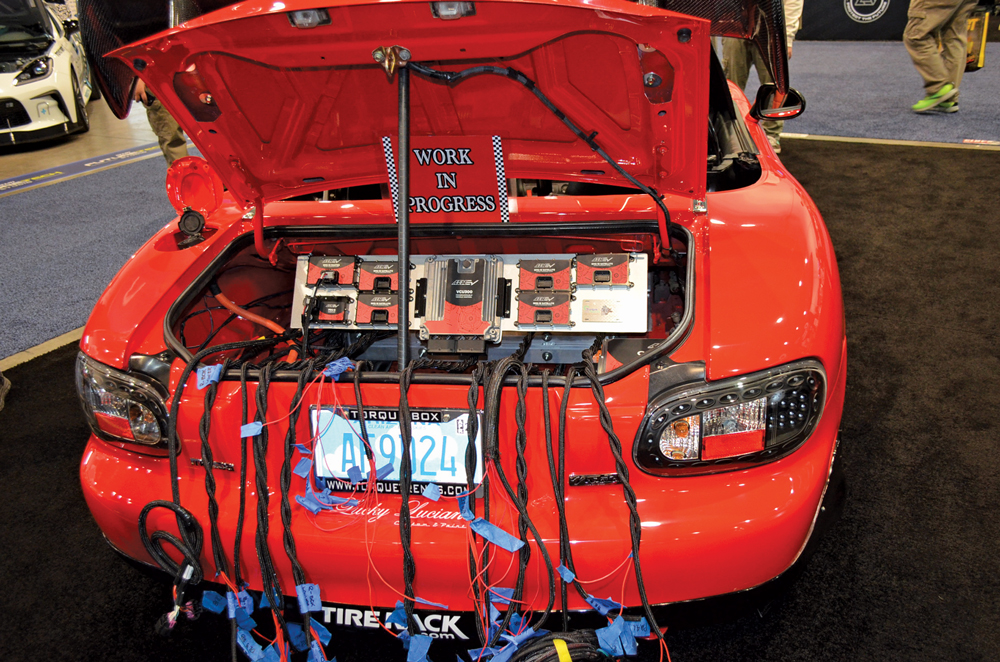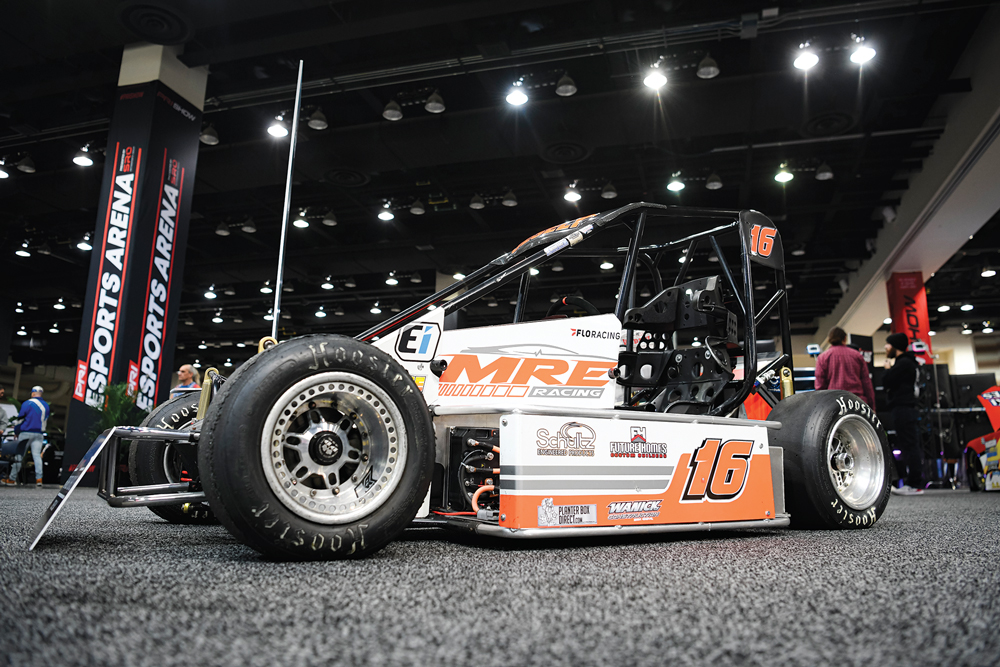Creating A Brighter Buzz

Recent advances in battery technology are reducing costs and making EV racing accessible to more people in the motorsports community.
When it comes to electric vehicle (EV) motorsports, the conversations around opportunities and limitations are generally centered around one critical component: the battery.
“The battery system is probably the most expensive part of building a high-level EV drag race car, and probably in most forms of racing,” said Jeff Lane, co-founder of MLe Racecars, Seattle, Washington. “However, the battery technology keeps getting more powerful, less expensive, and lighter weight.”

Low Maintenance Pays Dividends
EV battery technology is continuously improving, with the rate of change growing exponentially. However, the initial cost of batteries is still high. Pat McCue, Lane’s business partner and fellow co-founder of MLe Racecars, explained that while the initial cost of EV drag cars is significantly more because of the battery and powertrain, racers can make up the cost difference due to easier maintenance.
“If you take care of your batteries, they last a long time and have zero maintenance,” explained McCue. “The cost of operation is significantly lower, so after about three years, you are breaking even, and then you are going to start recouping money.”
Competitors in the Las Vegas, Nevada-based Nitrocross series are seeing similar results. Nitrocross introduced its fully electric FC1-X rallycross car in 2022, and, according to Chip Pankow, team owners were initially skeptical about the costs associated with switching to EV. But those attitudes are changing.
“About halfway through the [2022] season, the team owner from our largest team that had the most cars came to me and said, ‘I can’t believe how low our running costs are,’” said Pankow. “The running costs have been significantly less than half of what it costs to run an internal combustion vehicle at that level, because they need less staff and don’t need a whole team on the engine.”
To put the cost of EV batteries in perspective, the team at AEM Electronics, a Hawthorne, California-based company that specializes in performance electronics and EV conversion products, drew comparisons between the cost of an EV battery and that of a fuel system in an ICE-powered vehicle.
An AEM company source supplied the following example: Using the average of $350/kWh rate, a moderate 60kWh pack could cost upwards of $20,000–$25,000, once you consider the cost of raw cell/modules and time to design and build the custom pack. Although this is a steep cost on top of buying motors, inverters, charging hardware, and more, consider the battery pack purchase similar to buying the entire fuel system when building an ICE engine, plus all of the fuel for the next five years in one shot.
In the world of motorsports, cost is relative. While new adopters of EV racing technology are paying a premium for batteries and other components, the good news is that technological advancements are already reducing costs and making EV racing accessible to more people.
The Race to Keep Pace
With increased attention shifting toward EV vehicles—both on the track and on the road—the race to keep pace with battery technology is ramping up.
Development of a better battery is likely being driven by consumer EV demands, reported a source from AEM, who predicted these developments have the potential to be realized in the next five to 10 years. Some of these new battery technologies include Graphene and Solid State batteries, which promise up to 60-times the performance of current lithium cells in terms of power density for use in high-performance applications. Sodium-ion and lithium-sulfur batteries are other emerging technologies that aim at reducing costs and have the potential to bring consumer EV prices down by a significant amount, the source added.

While EV is a relatively niche discipline in today’s motorsports landscape, unlocking new battery performance is one of the major keys to increasing adoption and interest in EV motorsports.
“The technology is doubling every two to three years in battery technology, battery weight, and battery performance,” said McCue. “So as that progresses and batteries get cheaper, you’re going to see more opportunities to make lighter weight cars that more closely mimic SFI chassis specs. Then we can fit these cars into more and more opportunities to race.”
MLe Racecars has been working hand-in-hand with Ford to develop the Super Cobra Jet 1800—the fastest full-bodied EV drag car in the quarter mile—which clocked a time of 7.759 seconds at 180.14 mph at the 2024 NHRA Winternationals. This impressive run was made possible by their ability to develop a lighter and higher performance battery.
“Our new battery is what people refer to as stiffer,” said McCue. “When you draw energy out of a battery, the battery voltage sags. So the stronger your batteries, the more performance your batteries can produce. The stiffer that sag gets, the voltage doesn’t sag as much by employing the same amount of current out of them.”
After upgrading their Super Cobra Jet 1800, McCue and Lane credited the increased power and performance to this “stiffening” of the battery. “That alone is really the performance gain,” said McCue. “The battery systems allowed us to pull the same amount of current out of the batteries and maintain the voltage to a higher level. When you do volts and amps, you get watts, and watts are directly tied to horsepower. So that’s where we got the additional 400 horsepower in this car. Now it’s the Super Cobra Jet 1800, because we’re getting 1,800 crankshaft horsepower out of this car.”
Kirk Miller at Hypercraft, an EV powertrain manufacturer in Provo, Utah, was also optimistic about the opportunity to see battery costs fall. He cited the primary driver as being a continual reduction in the costs of anodes and cathodes, the two electrodes found in a battery that facilitate the flow of an electric charge.
“It seems like every day someone invented a new anode and cathode that has a different material that’s more readily available, whether it’s sodium or iron,” said Miller. “If you can integrate that into a battery pack, versus having to use precious metals that reside in different parts of the world, that’s going to bring the cost down dramatically. I think over the past year, there’s been another 50% reduction in anode and cathode costs.”
Controlling Thermal Runaway
While driving down the costs of EV batteries will give the sector a boost, one of the most critical areas of development revolves around battery safety.
Specific statistics on passenger vehicle fires are murky, but an Edmunds.com report found that EV fires—known as thermal runaway events—are significantly less common than vehicle fires involving ICE-powered vehicles. While that may be the reality, EV fires tend to garner outsized media attention—particularly in the motorsports space—which underscores the importance of developing additional safety measures for EV batteries.
“I think it’s really important that motorsport does it right, because if you have a battery fire in motorsport, that gets amplified around the world,” said Pankow. “If you look at the number of EV fires versus the number of internal combustion car fires, there’s a pretty big delta there, and it’s to the EVs’ advantage. They’re quite rare.”
Nevertheless, EV fires are dangerous. Without proper precautions in place, they pose a significant safety risk. In Pankow’s view, this creates a massive responsibility for sanctioning bodies.
“The only thing that concerns me is if you get a group that comes in, and they start running EVs, and the right procedures aren’t in place,” said Pankow. “That’s always a concern because that can look bad for everyone. It’s a matter of being smart and having the right processes in place for whatever you use.”

As for the right processes, those begin with a high-quality battery management system (BMS). “The battery management system is the most important system on an electric car these days. It’s actually more important than the battery itself, or the motor system,” said McCue. “A battery management system looks at every single cell. It is the brain. While there’s a whole different system that controls the motor, the BMS is what tells the motor controller that it’s okay to go. So if the BMS senses something, it can shut the whole car down, and it can turn the chargers off and not let you overcharge the battery.”
While BMS is now standard on all electric vehicles, the motorsports industry has introduced additional safety measures to reduce risk. In fact, coordination between the racing industry and OEMs is leading to enhanced battery safety.
“There’s so much happening in the OEM world that is transferring to the race world and vice versa,” said McCue. “For instance, in the last couple of years, there are now sensors that you put inside your battery box that can identify when a battery starts to vent gases, and that alerts the BMS system to turn the car off to stop you from taxing that cell.”
Another big safety development in EV batteries involves a distributed battery system. “There’s fused separate boxes, so if there was ever a problem, the fuse would open and shut things off, so you don’t have a whole pack that’s going to burn,” said Lane. “Usually when you see [EV fires], say with a Tesla for example, that’s because the [batteries] are all linked together. When one starts burning, they aren’t going to stop burning until every single battery is burned. There’s way better technology in the racing world to prevent that from happening.”
Adding flood ports to batteries is another way to limit the spread of a potential thermal runaway event. In fact, Hypercraft has gone a step further by integrating flame retardant materials between the battery cells.

“In some of the motorsports [sanctioning body] rulebooks, they have flood ports,” said Miller. “So now you’re not spraying on the outside of the battery, you actually penetrate the battery and extinguish the flame propagation from cell to cell. In our case, we have flame-retardant material in between all the cells. So if you puncture a cell, it is self-mitigating. It won’t expand and won’t do a full runaway. It might make a few cells, but the tight closure with all the flame-retardant material will prevent full propagation.”
Just as in any form of motorsports, fire prevention begins with preparation and communication. “The best way to mitigate a thermal runaway situation is it being prevented,” said Miller.
Fortunately, the continual emergence of new EV battery technology is paving the way for a safer, faster, and more affordable future for EV racing.
SOURCES
AEM Electronics
aemelectronics.com
Hypercraft
hypercraftusa.com
MLe Racecars
mleracecars.com
Nitrocross
nitrocrossracing.com
 MEMBERSHIP LOGIN
MEMBERSHIP LOGIN JOIN PRI
JOIN PRI


